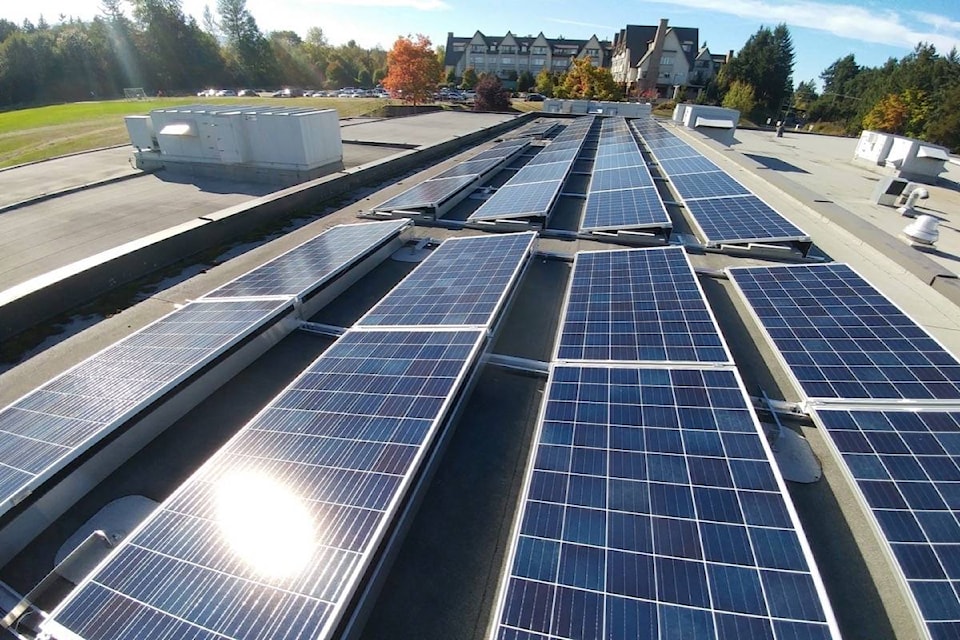School Board 69 (Qualicum) received the spending plan for its Annual Facility Grant money, meant to maintain and upgrade assets, at its Tuesday, May 22 meeting.
The total expenditure for the 2018/19 plan comes in at a little more than $960,000, with solar panel work at Oceanside Elementary School and asbestos removal at Pass Woodwinds and Ballenas schools coming in at $139,995 and $135,000.
Other larger items in the list of maintenance and upgrades include more than $50,000 for the roof replacement at Ballenas due to an overage on the tender, $50,000 for field repairs at Errington Elementary School, $50,000 for a new classroom in Oceanside Elementary’s lobby area to deal with increased enrolment, and $90,000 for pneumatic controls at Ballenas.
Operations and maintenance manager Chris Dempster noted that the planned work on the solar project for Oceanside has expanded due to savings the district has seen on its previous solar work.
Secretary-treasurer Ron Amos also went over the district’s 2017 Carbon Neutral Action Report at the meeting.
Despite showing a reduction in green house gas emissions from 2014 to 2016, 2017 saw an overall increase in emissions, requiring the purchase of $34,950 in offset credits (the purchase of offset credits does not include emissions from school buses as the Carbon Neutral Government Regulation does not include those in its scope, according to the report).
Amos noted that 2017 (from January to December) was the first year in seven that emissions from school buildings has gone up, and that 2017 was also the first year in five that the average mean temperature went down, requiring more heating.
A graph in the report showed that, since 2010, the green house gas emissions from the school bus fleet has been steadily going down, while the emissions associated with paper has been trending down since 2012, but has been up compared to 2014.
Trustee and vice-chair Julie Austin inquired why that was, with Amos replying that what’s important is the overall trend downwards, and that small changes can be effected by the timing of bulk purchases of paper.
He noted that the district’s IT department continues to look to reduce the number of printers available as a means of reducing the use of paper.
Other parts of the district’s carbon neutral action plan include evaluating bus replacements and considering whether to purchase propane over diesel, boiler replacements, finding ways to use less energy and alternate energy sources at False Bay Elementary School in particular, and installing solar arrays on schools.
The Kwalikum Secondary School solar array, for instance, came online in the fall of 2017, and is estimated to produce about 42,600 kilowatt hours of energy per year.
Austin suggested that, as a symbolic gesture, administration might look to provide board meeting agenda’s electronically rather than on paper.
